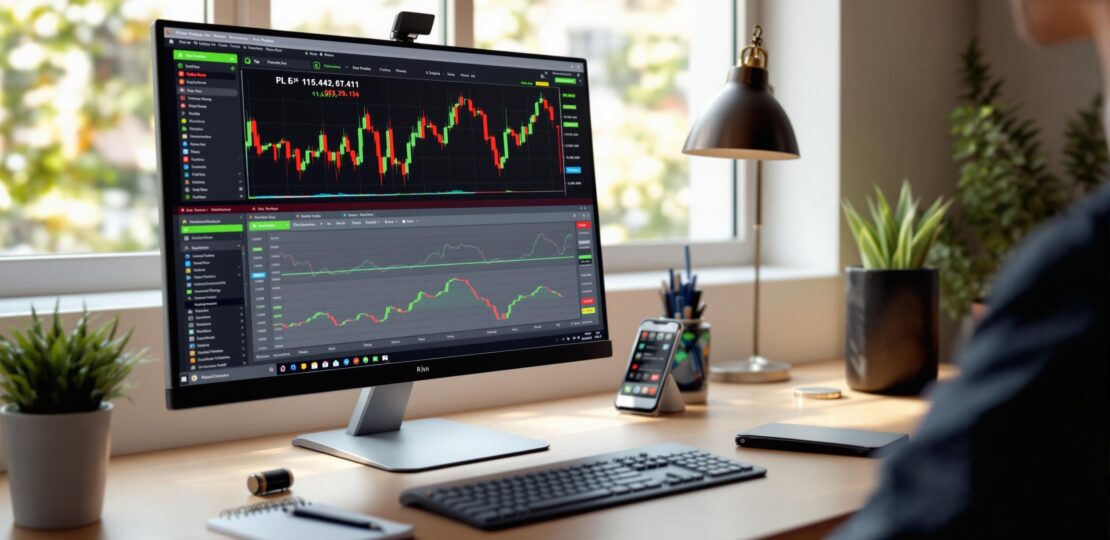
In copytrading, staying updated on your master trader’s actions is crucial. Alerts help you track trades, manage risks, and monitor performance in real-time, so you can act quickly and protect your investments. Here’s a quick overview of the key alert types:
- Trade Status Alerts: Updates on new trades, closures, stop-loss, take-profit, and leverage changes.
- Risk Alerts: Notifications for drawdowns, strategy changes, and unusual trading volume.
- Performance Alerts: Regular reports on profit/loss, success rates, and risk-reward ratios.
- Account Alerts: Warnings about balance, margin, and verification issues.
- System Alerts: Alerts for connection status, copy synchronization, and trader profile changes.
These alerts ensure you’re always informed and aligned with your trader’s strategy. Set them up based on your goals to stay in control of your portfolio.
TradingView Indicator Alerts Tutorial: How to Set Up Trading Alerts

Trade Status Alerts
Trade status alerts keep you updated on your master trader’s moves in real-time, making it easier to replicate trades and track critical decisions.
Trade Opens
When a master trader initiates a new position, you’ll get key details like the asset, entry price, position size, and initial stop-loss or take-profit levels. This helps you mirror their trades accurately.
Trade Closes
You’ll receive a summary when a trade is closed, including profit or loss, how long the trade was open, and the exit details. These insights give you a better understanding of your master trader’s approach.
Stop Loss and Take Profit Updates
Get notified whenever stop-loss or take-profit levels are adjusted. These updates ensure you’re aligned with your master trader’s risk management approach.
Leverage Updates
Leverage alerts inform you of any changes in position sizing, providing a glimpse into your master trader’s confidence and risk adjustments.
| Alert Type | Key Information Provided | Why It Matters |
|---|---|---|
| Trade Opens | Entry price, position size, initial parameters | Helps you replicate trades accurately |
| Trade Closes | Final profit/loss, exit price, trade duration | Offers insights into strategies and performance |
| SL/TP Updates | Updated exit levels, risk adjustments | Keeps you aligned with risk management |
| Leverage Changes | Position size changes, margin updates | Reflects strategy and confidence shifts |
These alerts are crucial for keeping you informed and ready to act. While trade status alerts focus on immediate updates, they work hand-in-hand with risk alerts to help you protect and grow your portfolio.
Risk Alerts
These alerts keep you informed about possible issues, allowing you to adjust your approach when needed.
Drawdown Warnings
Drawdown warnings activate when your account experiences losses that hit specific thresholds. By setting these alerts, you can decide whether to tweak your position sizes or pause copying until things stabilize.
| Drawdown Level | Suggested Action |
|---|---|
| 10% | Check position sizing |
| 15% | Think about reducing exposure |
| 20% | Reassess continuation |
| 25%+ | Conduct an urgent portfolio review |
Volume Changes
Sharp changes in trading volume can indicate shifts in market trends or trader actions. These alerts help you spot potential trend reversals or breakout opportunities.
Strategy Changes
Strategy change alerts notify you about adjustments like altered trading frequency, position sizes, or a focus on new asset classes. This helps you evaluate how these shifts might affect your portfolio.
Risk alerts focus on minimizing potential losses, while performance alerts give you a clearer view of your master trader’s success and strategy outcomes.
sbb-itb-c34bd9b
Performance Alerts
Performance alerts give you a clear picture of how your master trader is doing overall, focusing on their effectiveness and consistency over time.
Profit/Loss Reports
Regular profit and loss (P/L) reports – whether daily, weekly, or monthly – help you keep track of trading results and evaluate consistency. Here’s what to focus on:
| Timeframe | Metrics to Watch |
|---|---|
| Daily | Total P/L, Number of trades, Win rate |
| Weekly | Cumulative P/L, Average trade size, Risk exposure |
| Monthly | Performance trends, Maximum drawdown, Recovery periods |
Success Rate Updates
A noticeable change (5-10%) in success rate might signal a shift in your master trader’s strategy or reflect changing market conditions. A win rate above 50%, paired with strong risk-reward ratios, points to consistent performance. For instance, successful traders often achieve a 53% win rate across multiple trades [2].
Risk-Reward Changes
Pay attention to shifts in risk-reward ratios, as they often signal strategy adjustments or market changes. A 1:2 risk-reward ratio is a solid benchmark, ensuring potential profits outweigh risks [3]. Be alert for sudden changes in position sizes, trading frequency, or stop-loss levels – these could indicate a change in approach.
Account Alerts
Account alerts act as a safeguard for your trading account, helping you avoid costly errors. They work alongside your trading strategy to ensure your account is always ready to operate smoothly. Below are key types of account alerts that can help you stay on top of your trading game.
Balance and Margin Alerts
Keep an eye on your balance and set alerts for when it drops to 20% of your initial deposit. This helps maintain stable trading conditions and avoid disruptions.
| Warning Level | Recommended Action | Time to Act |
|---|---|---|
| Moderate (50%) | Review position sizes | Within 48 hours |
| Critical (30%) | Consider adding funds | Within 24 hours |
| Severe (20%) | Take immediate action | Within 2 hours |
Monitoring margin alerts has been shown to improve annual returns by 75.1% [1]. If you receive a margin warning, here’s what you can do:
- Add funds: Deposit more money to meet margin requirements.
- Reduce exposure: Close some positions to decrease leverage.
- Adjust copy settings: Lower your copy ratio to reduce position sizes.
Verification Status
Verification alerts help you stay compliant with regulations and avoid interruptions in your trading activities. These alerts typically notify you about expiring documents, identity verification needs, trading limits, or regulatory updates.
Set up these alerts and review them weekly to prevent any restrictions on your account. Staying on top of verification ensures smooth trading and lets you focus on achieving better results.
System Alerts
System alerts work as your safety mechanism, helping you stay in sync with your master trader’s actions and avoid technical disruptions.
Connection Status
Connection status alerts let you know right away if there’s an issue with your link to a master trader. These notifications help ensure your trading continues smoothly.
| Alert Type | Recommended Action | Priority Level |
|---|---|---|
| Connection Lost | Check your internet connection and platform | High |
| Intermittent Connection | Keep an eye on trade execution accuracy | Medium |
| Connection Restored | Verify the platform’s status | Medium |
Copy Status
Copy status alerts keep you updated on the trade copying process. They notify you about successful copying, interruptions, and synchronization updates.
"Acting on copy status alerts promptly minimizes losses from unmonitored trades." [1]
Trader Profile Updates
Profile update alerts notify you of any changes to your master trader’s risk settings, trading approach, performance stats, or verification status.
To stay on top of these updates, enable notifications across multiple channels and review your settings every quarter.
Wrapping It Up
Every alert type we’ve discussed plays an important role in keeping your trading efficient. Setting up the right alerts is a key part of improving your copytrading experience.
By carefully choosing and managing alerts, you can stay on top of your trades and react quickly when needed. Here’s a quick breakdown of the main alert categories:
| Alert Category | Purpose | Priority Level |
|---|---|---|
| Trade Status | Tracks positions in real-time | Critical |
| Risk | Helps minimize potential losses | High |
| Performance | Assesses strategy outcomes | Medium-High |
| Account | Safeguards account balance | High |
| System | Ensures technical functionality | Critical |
"A good copy trading strategy involves looking not only at past performance but also at a trader’s current situation, with a focus toward the future." [1]
To keep your alerts effective, review and fine-tune them every few months. For beginners, it’s smart to start with the basics and gradually add more as you gain confidence. This way, you stay informed without feeling overwhelmed.
Related Blog Posts
RELATED POSTS
View all


